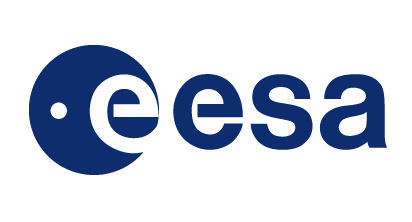5G METEORS Call2 - Topic 2 - PROTOTYPING 5G NEW RADIO FOR SATELLITE ON HIGHER PROTOCOL LAYERS RLC/PDCP/RRC
Introduction and problem statement
After a number of years of research and technical development the initial 5G New Radio (NR) technology according to Release 15 is now deployed as mainstream technology serving the public and industry. Similarly to LTE there will be several evolutions of New Radio within the upcoming 3GPP releases. Many extensions are currently under investigation in 3GPP to enable addressing further markets by cellular based communication systems, like automotive, positioning and industrial production/automation.
Release 17 of 3GPP represents a unique opportunity to standardize satellite as an integral part of 5G together with the cellular stakeholders given their increasing interest in the topic. This opportunity has to be seized immediately to eliminate the risk of a postponement of the standard development to future Releases beyond 17 while SatCom users and service providers are calling for standardized solutions.
The study item report for Non-Terrestrial-Networks (NTN) TR 38.811 ([1]) is available since June 2018, and provides the basis for this activity definition. TR 38.811 summarizes the identification of New Radio impacts on satellite operation and gave recommendations for a subsequent second study item on NTN in Rel-16 ([2], [3]) that was finalized in December 2019. The final study item report [3] is now available reflecting the agreements in 3GPP on NR solutions for satellite.
The 5G METEORS vision is to implement and operate a framework supporting dynamic prototyping in the 5G satellite convergence domain, responding in an agile manner to technology developments driven by the market and the standardization work in 3GPP to support satellites in 5G. More specifically, 5G METEORS draws on the expertise, knowledge and know-how developed and accumulated in Germany in the 5G and satellite communication domains by experts at academia, in small and large enterprises, as well as by entrepreneurs, and offers an opportunity to further expand that through a series of prototyping and concept validation activities.
5G METEORS activities aree tightly associated with the 3GPP standardization process and foster the standardization of 5G satellite integration in Releases 16 and 17. 5G METEORS activities are evaluated in respect to their topic match and timeliness in regard of the overall 3GPP schedule for the upcoming releases and especially for the work to support satellite in 5G.
Currently, one 5G-Meteors activity concentrates on the adaptations for NTN on the lower layers (PHY, MAC) of the OpenAirInterface (OAI) [4] New Radio stack on gNB and UE side. In addition it needs to be ensured that also the New Radio signaling protocols RLC, PDCP, SDAP for user plane and RRC for control plane ([5], see below) function over the satellite link on top of PHY and MAC.

Figure 1: NR User Plane Protocol Stack (left) and Control Plane Stack (right) [5]
Scope of the activity
This activity shall provide a real-time prototype implementation of the relevant satellite features in the protocol layers RLC, PDCP and RRC to operate over satellite.
The activity shall very closely follow the standardization work on NTN in 3GPP in Release 17, especially the RAN2 working group, where protocol modifications in RLC, PDCP, RRC and SDAP to support satellite will be standardized, following the studies in [2], [3]. If needed, additional changes in the RLC/PDCP/RRC layers shall be proposed to 3GPP.
The existing developments in OAI on the 3GPP F1 interface enabling a higher layer split between a Central Unit (CU) and a Distributed Unit (DU) shall be reviewed as well in this activity and optionally to be completed on CU and DU side.
The activity shall comprise the following parts:
- Mandatory: Review of the OAI-New Radio code for RLC, PDCP and RRC layers;
- Mandatory: Implementation of missing NR features in RLC and PDCP layers and in the RRC configuration;
- Mandatory: Review of existing work on the F1 interface between MAC and RLC layers;
- Optional: Completion of the OAI F1 interface implementation on the gNB side.
A cooperation with the activities under 5G METEORS OC1 Topic 1 regarding SDR and open source contributions is recommended.
The activity can target a static, file-based RRC configuration for gNB and UE, resulting in a 5G-NR only operation not requiring LTE.
Deliverables and Output
- Real time prototype including New Radio protocol layers RLC, PDCP for gNB and UE, adapted to operate over satellite with static RRC configuration;
- Contributions to the open source project OpenAirInterface on RLC/PDCP/RRC extensions for satellite;
- If needed, 3GPP contributions regarding additional changes in RLC/PDCP/RRC layers;
- Optional: Completion of the OAI F1 interface implementation on gNB side;
- Technical note on the activity results.
Duration and schedule (mid term milestone and review, if applicable)
The maximum duration of this activity should not exceed 8 months to be in line with 3GPP discussions, and an intermediate milestone is foreseen.
Maximum budget available for the activity
The budget of this activity shall not exceed 60.000 €.
References
[1] 3GPP TR 38.811 “Study on New Radio (NR) to support non terrestrial networks (Release 15)”, V15.0.0, 2018-06
[2] 3GPP RP-190710 “Study on solutions for NR to support non-terrestrial networks (NTN)”, Thales, 3GPP TSG RAN meeting #83, Shenzhen, China, March 18-21, 2019
[3] 3GPP TR 38.821 “Solutions for NR to support non-terrestrial networks (NTN) (Release 16)”, v1.2.0, 2019-12
[5] 3GPP TS 38.300 “NR; NR and NG-RAN Overall Description; Stage 2 (Release 15)”, v15.5.0, 2019-03
[6] 3GPP RP-193234, “Work Item Description: Solutions for NR to support non-terrestrial networks (NTN)”, Sitges, Spain, December 2019
Proposal Submission
Submit your proposal to this topic here.

